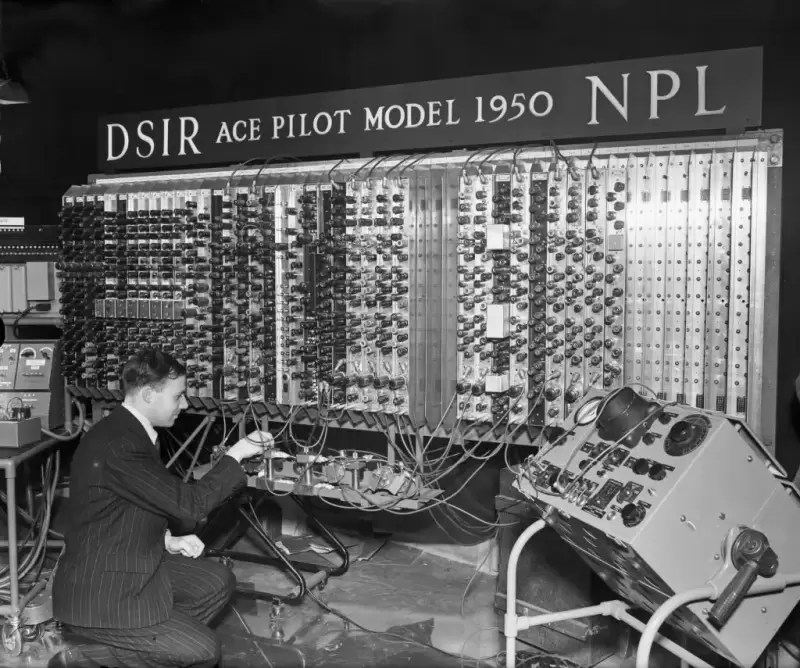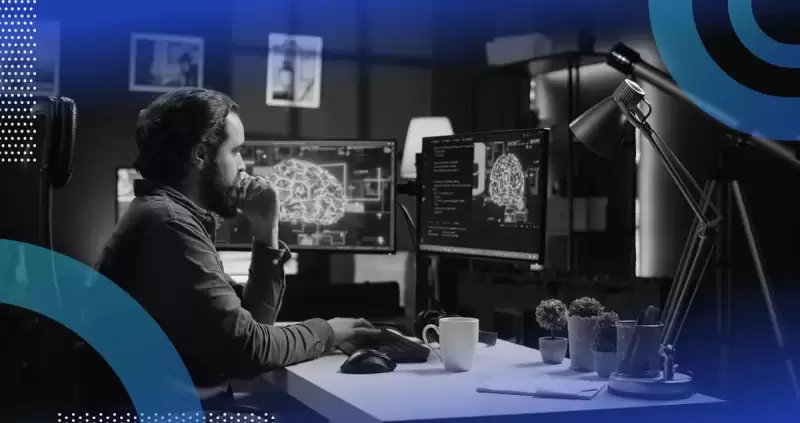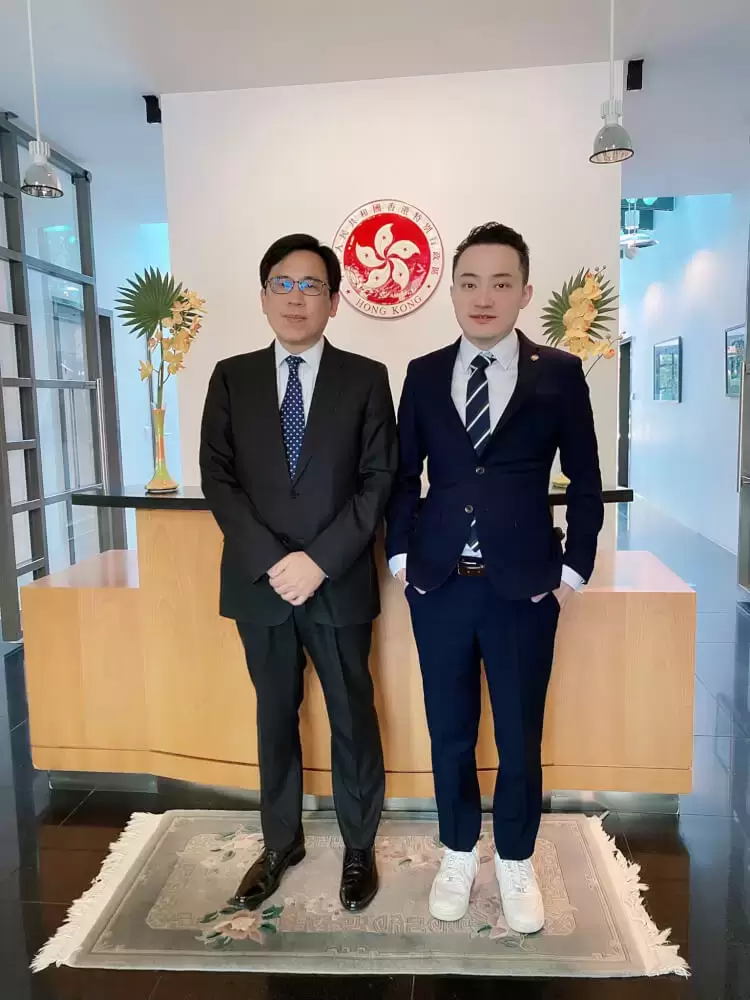 |
|
 |
|
 |
|
 |
|
 |
|
 |
|
 |
|
 |
|
 |
|
 |
|
 |
|
 |
|
 |
|
 |
|
 |
|
이것은“우리는 무언가를 잊어 버린다”는 의미가 아니라 핵심 건축 적 의미에서. 실제 메모리 레이어가 없습니다.

Web3 has a memory problem. Not in the “we forgot something” sense, but in the core architectural sense. It doesn’t have a real memory layer.
Web3에는 메모리 문제가 있습니다. “우리는 무언가를 잊어 버린”의미가 아니라 핵심 건축 적 의미에 있습니다. 실제 메모리 레이어가 없습니다.
Blockchains today don’t look completely alien compared to traditional computers, but a core foundational aspect of legacy computing is still missing: A memory layer built for decentralization that will support the next iteration of the internet.
오늘날 블록 체인은 전통적인 컴퓨터에 비해 완전히 외계인으로 보이지 않지만 레거시 컴퓨팅의 핵심 기초 측면은 여전히 누락되었습니다. 인터넷의 다음 반복을 지원할 분산을 위해 구축 된 메모리 레이어.
After World War II, John von Neumann laid out the architecture for modern computers. Every computer needs input and output, a CPU for control and arithmetic, and memory to store the latest version data, along with a “bus” to retrieve and update that data in the memory. Commonly known as RAM, this architecture has been the foundation of computing for decades.
제 2 차 세계 대전 후 John von Neumann은 현대 컴퓨터의 아키텍처를 마련했습니다. 모든 컴퓨터는 입력 및 출력, 제어 및 산술을위한 CPU, 최신 버전 데이터를 저장하기위한 메모리와 "버스"와 함께 메모리에서 해당 데이터를 검색하고 업데이트해야합니다. 일반적으로 RAM으로 알려진이 아키텍처는 수십 년 동안 컴퓨팅의 기초였습니다.
At its core, Web3 is a decentralized computer — a “world computer.” At the higher layers, it’s fairly recognizable: operating systems (EVM, SVM) running on thousands of decentralized nodes, powering decentralized applications and protocols.
핵심적으로 Web3는 분산 된 컴퓨터 인“세계 컴퓨터”입니다. 상위 계층에서는 수천 개의 분산 노드에서 실행되는 운영 체제 (EVM, SVM)가 상당히 인식 할 수 있습니다.
But, when you dig deeper, something’s missing. The memory layer essential for storing, accessing and updating short-term and long term data, doesn’t look like the memory bus or memory unit von Neumann envisioned. Instead, it's a mashup of different best-effort approaches to achieve this purpose, and the results are overall messy, inefficient and hard to navigate.
그러나 더 깊이 파고 들으면 뭔가 빠졌습니다. 단기 및 장기 데이터를 저장, 액세스 및 업데이트하는 데 필수적인 메모리 계층은 메모리 버스 또는 메모리 장치 Von Neumann이 구상 된 것처럼 보이지 않습니다. 대신,이 목적을 달성하기위한 다양한 최고의 효과 접근 방식의 매시업이며 결과는 전반적으로 지저분하고 비효율적이며 탐색하기가 어렵습니다.
Here’s the problem: if we’re going to build a world computer that’s fundamentally different from the von Neumann model, there better be a really good reason to do so. As of right now, Web3’s memory layer isn’t just different, it’s convoluted and inefficient. Transactions are slow. Storage is sluggish and costly. Scaling for mass adoption with this current approach is nigh impossible. And, that’s not what decentralization was supposed to be about.
문제는 다음과 같습니다. Von Neumann 모델과 근본적으로 다른 세계 컴퓨터를 구축하려는 경우 그렇게해야 할 좋은 이유가 더 좋습니다. 현재 Web3의 메모리 레이어는 다르지 않고 복잡하고 비효율적입니다. 거래는 느립니다. 저장은 느리고 비용이 많이 듭니다. 이 현재 접근법으로 대량 채택을위한 스케일링은 거의 불가능합니다. 그리고 그것은 탈 중앙화가 예상되는 것이 아닙니다.
But there is another way. A lot of people in this space are trying their best to work around this limitation and we're at a point now where the current workaround solutions just cannot keep up. This is where using algebraic coding, which makes use of equations to represent data for efficiency, resilience and flexibility, comes in.
그러나 다른 방법이 있습니다. 이 공간에있는 많은 사람들 이이 한계를 해결하기 위해 최선을 다하고 있으며, 우리는 현재 해결 방법을 유지할 수없는 시점에 있습니다. 대수 코딩을 사용하여 효율성, 탄력성 및 유연성을위한 데이터를 나타내는 방정식을 사용하는 곳입니다.
The core problem is this: how do we implement decentralized code for Web3?
핵심 문제는 이것입니다. Web3 용 탈 중앙화 코드를 어떻게 구현합니까?
This is why I took the leap from academia where I held the role of MIT NEC Chair and Professor of Software Science and Engineering to dedicate myself and a team of experts in advancing high-performance memory for Web3. I saw something bigger: the potential to redefine how we think about computing in a decentralized world.
이것이 제가 학계에서 도약 한 이유는 MIT NEC 의장 겸 소프트웨어 과학 및 공학 교수의 역할을 맡아 Web3의 고성능 기억력을 발휘하는 데 전념하기 위해 소프트웨어 과학 및 공학 교수의 역할을 맡았습니다. 나는 더 큰 것을 보았습니다. 분산 된 세상에서 컴퓨팅에 대해 어떻게 생각하는지 재정의 할 수있는 잠재력.
My team at Optimum is creating decentralized memory that works like a dedicated computer. Our approach is powered by Random Linear Network Coding (RLNC), a technology developed in my MIT lab over nearly two decades. It’s a proven data coding method that maximizes throughput and resilience in high-reliability networks from industrial systems to the internet.
Optimum의 우리 팀은 전용 컴퓨터처럼 작동하는 분산 메모리를 만들고 있습니다. 우리의 접근 방식은 거의 20 년 동안 MIT 실험실에서 개발 된 기술인 RLNC (Random Linear Network Coding)로 구동됩니다. 산업 시스템에서 인터넷으로 고출성 네트워크의 처리량과 탄력성을 극대화하는 입증 된 데이터 코딩 방법입니다.
Data coding is the process of converting information from one format to another for efficient storage, transmission or processing. Data coding has been around for decades and there are many iterations of it in use in networks today. RLNC is the modern approach to data coding built specifically for decentralized computing. This scheme transforms data into packets for transmission across a network of nodes, ensuring high speed and efficiency.
데이터 코딩은 효율적인 스토리지, 전송 또는 처리를 위해 정보를 한 형식에서 다른 형식으로 변환하는 프로세스입니다. 데이터 코딩은 수십 년 동안 사용되어 왔으며 오늘날 네트워크에서 사용하는 많은 반복이 있습니다. RLNC는 분산 컴퓨팅을 위해 특별히 구축 된 데이터 코딩에 대한 최신 접근 방식입니다. 이 체계는 데이터를 노드 네트워크에서 전송하기 위해 패킷으로 변환하여 고속과 효율성을 보장합니다.
With multiple engineering awards from top global institutions, more than 80 patents, and numerous real-world deployments, RLNC is not only a theory but a tested and proven technology. It has received recognition such as the 2009 IEEE Communications Society and Information Theory Society Joint Paper Award for the work "A Random Linear Network Coding Approach to Multicast." RLNC's broader impact was acknowledged with the IEEE Koji Kobayashi Computers and Communications Award in 2022.
Top Global Institutions의 여러 엔지니어링 상, 80 개가 넘는 특허 및 수많은 실제 배포를 통해 RLNC는 이론 일뿐 만 아니라 테스트되고 입증 된 기술입니다. 2009 IEEE Communications Society 및 Information Theory Society 공동 종이 상과 같은 인정을 받았습니다. RLNC의 광범위한 영향은 2022 년 IEEE Koji Kobayashi Computers and Communications Award로 인정되었습니다.
Now, RLNC is ready for decentralized systems, enabling faster data propagation, efficient storage, and real-time access, making it a key solution for Web3’s scalability and efficiency challenges.
이제 RLNC는 분산 시스템에 대한 준비가되어있어 데이터 전파, 효율적인 스토리지 및 실시간 액세스가 더 빨라져 Web3의 확장 성 및 효율성 문제에 대한 핵심 솔루션이됩니다.
Let’s take a step back. Why does all of this matter? Because we need memory for the world computer that’s not just decentralized but also efficient, scalable and reliable.
한 걸음 물러 봅시다. 이 모든 것이 중요한 이유는 무엇입니까? 우리는 분산뿐만 아니라 효율적이고 확장 가능하며 신뢰할 수있는 세계 컴퓨터에 대한 메모리가 필요하기 때문입니다.
Currently, blockchains rely on best-effort, ad hoc solutions that achieve partially what memory in high-performance computing does. What they lack is a unified memory layer that encompasses both the memory bus for data propagation and the RAM for data storage and access.
현재 블록 체인은 고성능 컴퓨팅의 메모리가 부분적으로 달성하는 최상의 비 효과적 인 임시 솔루션에 의존합니다. 그들이 부족한 것은 데이터 전파를위한 메모리 버스와 데이터 저장 및 액세스를위한 RAM을 모두 포함하는 통합 메모리 계층입니다.
The bus part of the computer should not become the bottleneck, as it does now. Let me explain.
컴퓨터의 버스 부분은 지금처럼 병목 현상이되어서는 안됩니다. 설명하겠습니다.
“Gossip” is the common method for data propagation in blockchain networks. It is a peer-to-peer communication protocol in which nodes exchange information with random peers to spread data across the network. In its current implementation, it struggles at scale.
"가십"은 블록 체인 네트워크에서 데이터 전파를위한 일반적인 방법입니다. 노드가 무작위 피어와 정보를 교환하여 네트워크 전체에 데이터를 전파하는 피어 투 피어 통신 프로토콜입니다. 현재의 구현에서는 규모에 맞게 어려움을 겪고 있습니다.
Imagine you need 10 pieces of information from neighbors who repeat what they’ve heard. As you speak to them, at first you get new information. But as you approach nine out of 10, the chance of hearing something new from a neighbor drops,
그들이들은 것을 반복하는 이웃들의 10 가지 정보가 필요하다고 상상해보십시오. 당신이 그들과 대화 할 때, 처음에는 새로운 정보를 얻습니다. 그러나 10 명 중 9 명이 다가 가면 이웃으로부터 새로운 것을들을 가능성이 떨어집니다.
부인 성명:info@kdj.com
제공된 정보는 거래 조언이 아닙니다. kdj.com은 이 기사에 제공된 정보를 기반으로 이루어진 투자에 대해 어떠한 책임도 지지 않습니다. 암호화폐는 변동성이 매우 높으므로 철저한 조사 후 신중하게 투자하는 것이 좋습니다!
본 웹사이트에 사용된 내용이 귀하의 저작권을 침해한다고 판단되는 경우, 즉시 당사(info@kdj.com)로 연락주시면 즉시 삭제하도록 하겠습니다.
-

-

-

- Pytorch Transformer Encoder가 설명했습니다
- 2025-04-03 04:45:12
- 변압기 인코더는 입력 시퀀스를 효율적으로 처리하도록 설계된 딥 러닝 아키텍처입니다.
-

-

-

-

-

-

- 키르기스스탄
- 2025-04-03 04:30:12
- 국가는 디지털 자산 규제를 발전시키고 법적 프레임 워크를 테스트하며 라이센스 플랫폼을 시작하고 있습니다.




























































